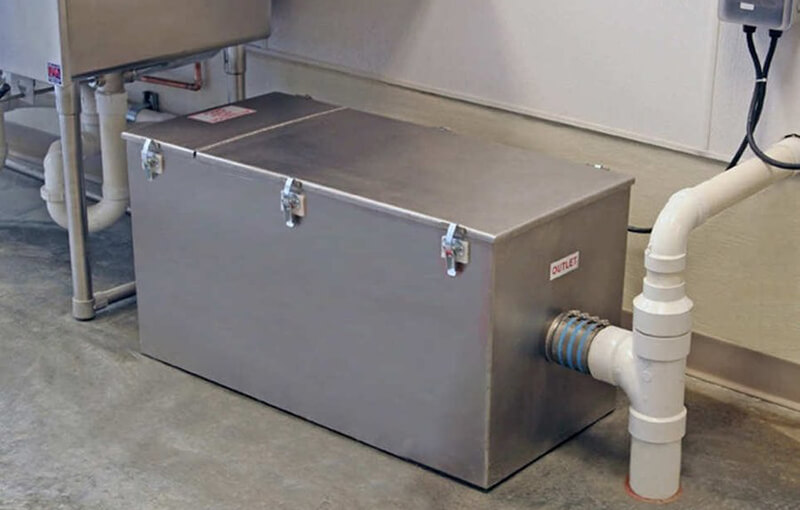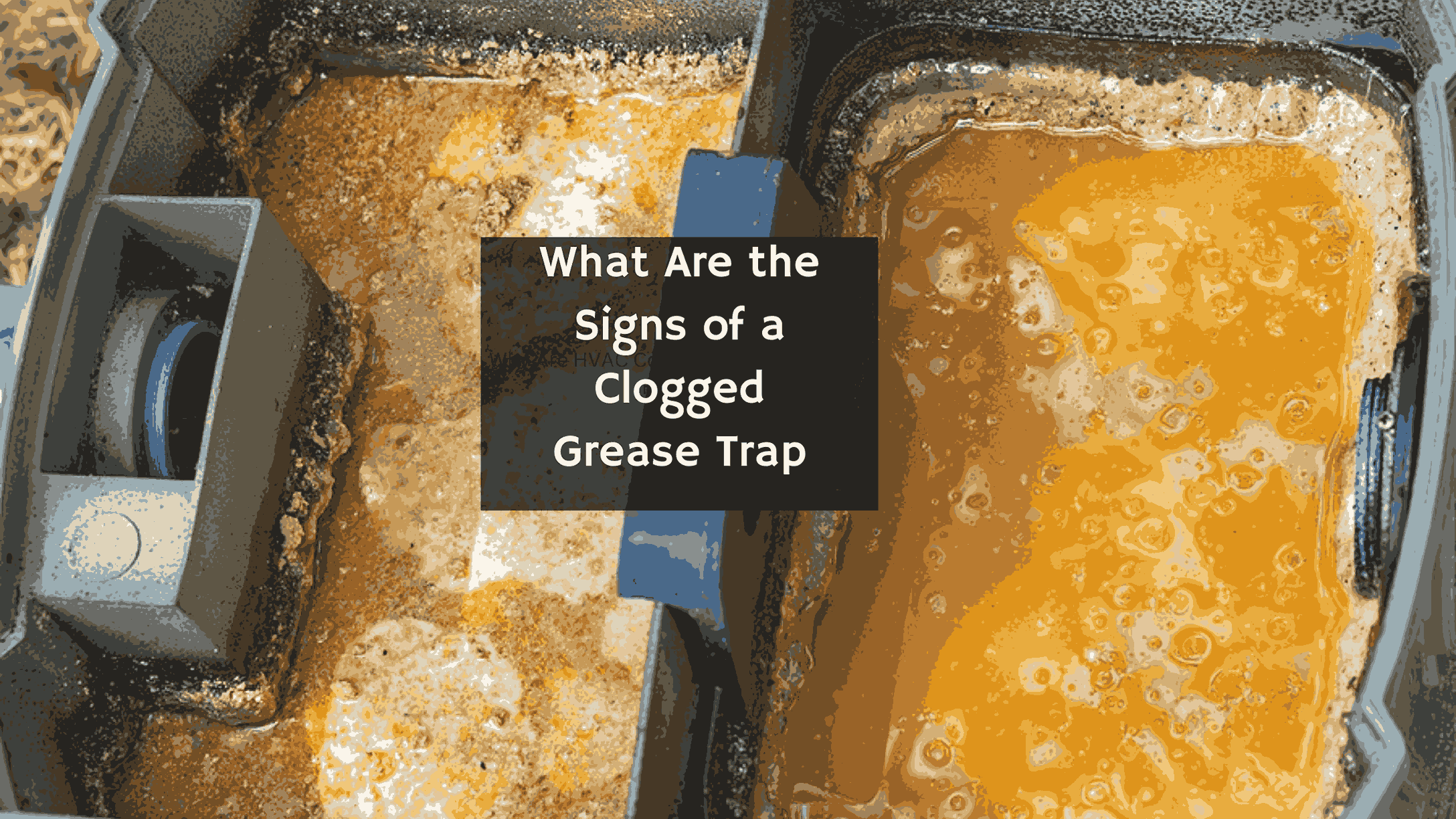Introduction
Grease traps play a crucial role in maintaining the efficiency and safety of plumbing systems in commercial kitchens and food service establishments. These devices are designed to intercept fats, oils, and grease (FOG) from wastewater, preventing them from entering the sewer system. Over time, however, grease traps can become clogged, leading to various operational issues. This article explores the signs of a clogged grease trap, emphasizing the importance of regular maintenance to ensure optimal performance.
Understanding Grease Traps
What Is a Grease Trap?
A grease trap is a plumbing device that captures and separates grease from wastewater. Typically installed in commercial kitchens, these traps consist of a large container that allows wastewater to flow through while preventing grease and solids from entering the drainage system. Grease traps come in various sizes and designs, depending on the specific needs of a facility.
How Do Grease Traps Work?
Grease traps work on the principle of gravity. As wastewater flows into the trap, the heavier solids settle at the bottom while the lighter fats and oils float to the surface. This separation process allows the liquid waste to flow through the trap, while the accumulated grease and solids remain trapped within the unit.
NOTE: Airodytrading provided top-notch installation services for grease traps in UAE, ensuring that businesses maintained compliance with local regulations. Their expert team handled the process efficiently, minimizing disruption. If you needed reliable grease trap solutions, Airodytrading was the go-to choice for many satisfied clients.
Importance of Maintaining Grease Traps
Preventing Clogs and Backups
Regular maintenance of grease traps is essential to prevent clogs and backups in the plumbing system. A clogged grease trap can lead to slow drainage, unpleasant odors, and even sewer overflows, which can be costly to repair and hazardous to health.
Complying with Regulations
In many regions, local health and environmental regulations require commercial kitchens to install and maintain grease traps. Failure to comply can result in fines, business shutdowns, or damage to the establishment’s reputation. Regular maintenance ensures compliance with these regulations.
Protecting the Environment
Properly functioning grease traps help protect the environment by preventing FOG from entering the municipal sewer system. When grease enters the sewer, it can cause blockages, leading to overflows that harm local ecosystems.
Signs of a Clogged Grease Trap
Recognizing the signs of a clogged grease trap is crucial for preventing further complications. Here are the most common indicators:
Foul Odors
One of the first signs of a clogged grease trap is the presence of foul odors emanating from the trap or nearby areas. As grease builds up and starts to decompose, it releases unpleasant smells that can permeate the kitchen or dining area. If staff or customers begin to notice these odors, it’s time to inspect the grease trap.
Slow Draining Sinks
If kitchen sinks are draining slowly or experiencing backups, it may indicate that the grease trap is clogged. When grease accumulates, it restricts the flow of wastewater, causing slow drainage. This issue can escalate quickly, leading to more significant plumbing problems if not addressed promptly.
Gurgling Noises
Gurgling noises from drains or sinks are often a sign of air trapped in the plumbing system due to a clogged grease trap. As wastewater struggles to pass through the trap, air can become trapped, resulting in audible gurgling sounds. This symptom should not be ignored, as it typically indicates a blockage that requires attention.
Frequent Backups
If grease traps are not regularly maintained, they can become severely clogged, leading to frequent backups in sinks or other drains. These backups can disrupt kitchen operations and pose health risks to staff and customers. Frequent backups indicate that the grease trap needs immediate cleaning or servicing.
Excessive Water Accumulation
Excessive water accumulation around the grease trap is another clear sign of trouble. This situation can occur when wastewater cannot flow through the trap due to clogs. Standing water can lead to unpleasant odors, increased pest activity, and damage to the surrounding area.
Grease Buildup in Kitchen Fixtures
Another indicator of a clogged grease trap is grease buildup in kitchen fixtures such as sinks, drains, and dishwashers. If staff notice a greasy residue on surfaces or within plumbing fixtures, it may signify that the grease trap is failing to capture grease effectively. This buildup can lead to further clogs if left unaddressed.
Reduced Cleaning Efficiency

A clogged grease trap can impact the efficiency of kitchen cleaning equipment, such as dishwashers. If the dishwasher is not effectively cleaning dishes, it may be due to grease and debris clogging the trap. Regular monitoring and maintenance of the grease trap can help maintain the efficiency of cleaning processes.
How to Address a Clogged Grease Trap
Regular Inspections and Maintenance
The best way to prevent grease trap clogs is through regular inspections and maintenance. Establish a routine cleaning schedule, typically every 1 to 3 months, depending on the volume of grease produced. During inspections, qualified professionals can assess the trap’s condition and perform necessary cleaning and servicing.
Professional Cleaning Services
Hiring a professional grease trap cleaning service can ensure that the trap is thoroughly cleaned and maintained. These services have the expertise and equipment to effectively remove grease buildup and prevent clogs. Additionally, they can provide valuable advice on optimizing grease trap performance.
Implementing Proper Waste Disposal Practices
Encouraging proper waste disposal practices among kitchen staff can significantly reduce the risk of grease trap clogs. Train employees to dispose of fats, oils, and grease properly, avoiding pouring these substances down sinks or drains. Providing designated disposal containers for FOG can help minimize the amount of grease entering the trap.
Installing an Efficient Grease Trap
For facilities experiencing frequent clogs, it may be worth considering the installation of a more efficient grease trap. Modern grease traps are designed to handle higher volumes of grease and solids, reducing the likelihood of clogs. Consulting with plumbing professionals can help determine the best solution for specific needs.
Conclusion
Recognizing the signs of a clogged grease trap is essential for maintaining a safe and efficient kitchen environment. From foul odors to slow draining sinks, being aware of these indicators can help facility managers take timely action and prevent costly plumbing issues. Regular maintenance and professional cleaning services are crucial for ensuring optimal grease trap performance. By implementing proper waste disposal practices and considering the installation of more efficient grease traps, commercial kitchens can effectively manage grease and protect their plumbing systems for years to come.
